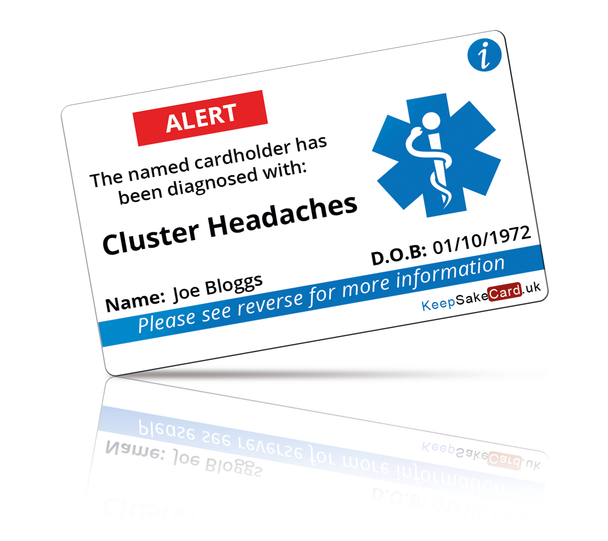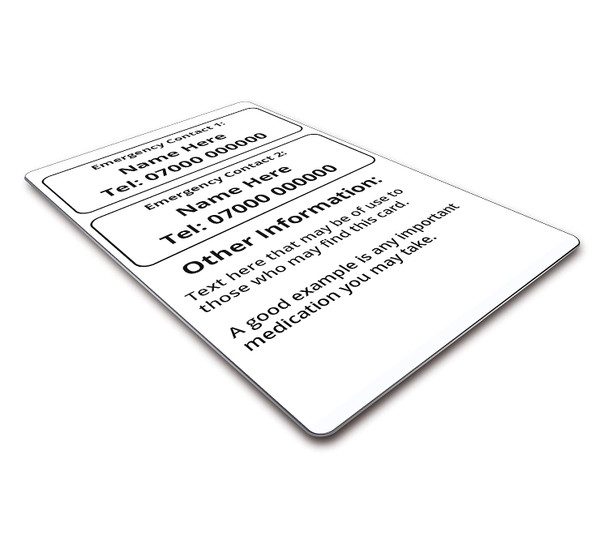Description
Cluster Headaches Medical I.C.E. Card – In Case of Emergency
Cluster Headaches are a rare but extremely painful neurological condition characterised by intense headaches on one side of the head, often around the eye. Attacks can come in cycles and may be accompanied by redness, tearing, nasal congestion, or agitation. The pain is often described as one of the worst known to medicine. In emergencies, these symptoms may be misunderstood as a stroke, anxiety, or drug reaction. This fully printed Cluster Headaches ICE (In Case of Emergency) card ensures your condition is recognised immediately, helping avoid unnecessary interventions and supporting fast, appropriate care.
Ideal for public outings, work, travel, or hospital visits — this card provides peace of mind that your diagnosis will be understood, even if you're unable to explain it during an attack.
Features & Benefits:
- Fully printed PVC card with no handwriting required
- Standard credit card size that fits neatly into wallets, purses, or lanyards
- Clearly marked with “Cluster Headaches” for quick and visible identification
- Reverse side includes space for two emergency contact names and phone numbers
- Additional area for optional notes such as oxygen use, medications (e.g. triptans), or known triggers
- Optional field for date of birth to support emergency identification
- Waterproof, durable, and designed for everyday use
This Cluster Headaches ICE card is a helpful way to communicate your condition in emergency situations, ensuring responders act quickly and with understanding.
What are Cluster Headaches?
Cluster Headaches are a neurological condition that causes severe, one-sided head pain in cyclical patterns or "clusters." Attacks can last from 15 minutes to 3 hours and may occur multiple times a day over several weeks. Symptoms can include tearing, nasal congestion, drooping eyelid, or facial sweating. Although rare, the condition is extremely debilitating and often misdiagnosed. Carrying an ICE card ensures that your condition is known and helps prevent confusion with more serious but unrelated medical emergencies.






